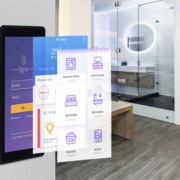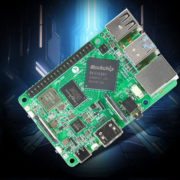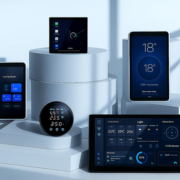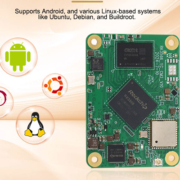Raspberry Pi Smart Home Control Panel: Affordable Innovation for DIY Home Automation
As smart homes become increasingly popular, enthusiasts and developers are turning to cost-effective and flexible solutions to build their own control systems. Among these, the Raspberry Pi smart home control panel stands out as a versatile, budget-friendly option that empowers users to customize, program, and control various smart devices from a single interface. Whether you’re a hobbyist, developer, or integrator, Raspberry Pi offers the foundational tech needed to create a robust smart home control panel — and with providers like Portworld, your project can scale with industrial-grade touch interfaces and system integrations.
Why Use Raspberry Pi for a Smart Home Control Panel?
Raspberry Pi is a powerful, compact single-board computer with GPIO (General Purpose Input/Output) pins that make it ideal for building automation systems. Here’s why it fits perfectly into smart home control panel projects:
1. Low-Cost, High Versatility
Raspberry Pi boards range from the basic Pi Zero to the powerful Pi 5, allowing developers to match their performance needs to budget constraints. Compared to traditional embedded systems or proprietary smart home hubs, Raspberry Pi offers a low-cost, high-flexibility alternative.
2. Open-Source Ecosystem
It supports open-source operating systems like Raspberry Pi OS, Ubuntu, and even Home Assistant OS, making it easy to customize the control logic and UI of your smart home control panel.
3. Connectivity Options
With built-in Wi-Fi, Bluetooth, GPIO, and USB ports, Raspberry Pi easily connects to smart lights, thermostats, cameras, door sensors, and more. MQTT, Zigbee, Z-Wave, and even Matter support can be added through HATs or USB dongles.
4. User Interface Customization
Pairing Raspberry Pi with a touch screen (like Portworld’s 4-inch or 5-inch capacitive panels) allows you to build a fully customizable touch-based smart home control panel, with tailored layouts, themes, and automation scenes.
Key Features of a Raspberry Pi Smart Home Control Panel
When building your control panel, consider integrating these features:
- Home Assistant Integration: One of the most popular home automation platforms that runs natively on Raspberry Pi, allowing connection to over 1,000 devices and services.
- Touch Screen UI: A user-friendly touch interface for controlling lights, scenes, HVAC, media, and security.
- Local Control & Privacy: Keep data in your home and avoid reliance on cloud services.
- Modular Expansion: Add-ons like PIR sensors, temperature/humidity sensors, and voice assistants enhance functionality.
- Energy Monitoring: Connect smart meters or use Zigbee-enabled devices to display real-time energy usage.
Portworld’s Smart Touch Panel Solutions for Raspberry Pi Projects
While Raspberry Pi is a powerful backend, it needs a reliable front-end interface — and that’s where Portworld comes in. As a leading provider of customizable touch screen solutions, Portworld offers:
4-Inch & 5-Inch Smart Control Panels
These compact capacitive touch displays are ideal for Raspberry Pi-based smart home control panel projects. They’re sleek, responsive, and easy to mount on walls or integrate into enclosures.
POE-Enabled Touch Panels
Need power and data through a single cable? Portworld’s PoE-compatible panels simplify setup and reduce clutter.
Linux & Android Compatibility
Portworld panels support Android, Debian, and Ubuntu — all commonly used with Raspberry Pi — allowing full compatibility with open-source smart home platforms.
Custom PCB & SDK Support
If you’re developing a commercial product based on Raspberry Pi, Portworld offers PCB customization, SDK integration, and BSP support for seamless development.
High-Quality Display & Durability
Portworld’s industrial-grade screens ensure long-term reliability, even in high-use environments like kitchens, entrances, or control rooms.
How to Set Up a Raspberry Pi Smart Home Control Panel
Here’s a simplified setup guide:
Hardware Setup
- Raspberry Pi 4/5
- Portworld 4” or 5” Touch Display (HDMI or GPIO interface)
- MicroSD card (32GB+)
- Power supply or PoE injector (if using PoE-enabled display)
- Wi-Fi or Ethernet connection
Software Installation
- Flash Home Assistant OS or Raspberry Pi OS
- Install required packages (
MQTT,Node-RED,Zigbee2MQTT, etc.) - Calibrate the touch screen and configure resolution
Device Integration
- Connect Zigbee/Z-Wave hub if needed
- Add integrations for smart lights, thermostats, cameras, etc.
- Create automation rules and dashboard cards in Home Assistant
UI Customization
- Design a responsive dashboard for touch use
- Use themes, tabs, and interactive cards to improve UX
Wall Mounting & Final Touches
- Install the screen on the wall or enclosure
- Secure cable management (especially if using PoE)
- Test responsiveness, adjust brightness, and refine controls
Future Potential and Trends
The DIY smart home control panel market is booming, and Raspberry Pi is at its core. With the emergence of Matter, local voice assistants, and energy-efficient smart devices, the future is about interoperability, privacy, and custom control.
Companies like Portworld are bridging the gap between DIY and professional-grade control panels, offering high-quality display hardware that complements open-source platforms.










